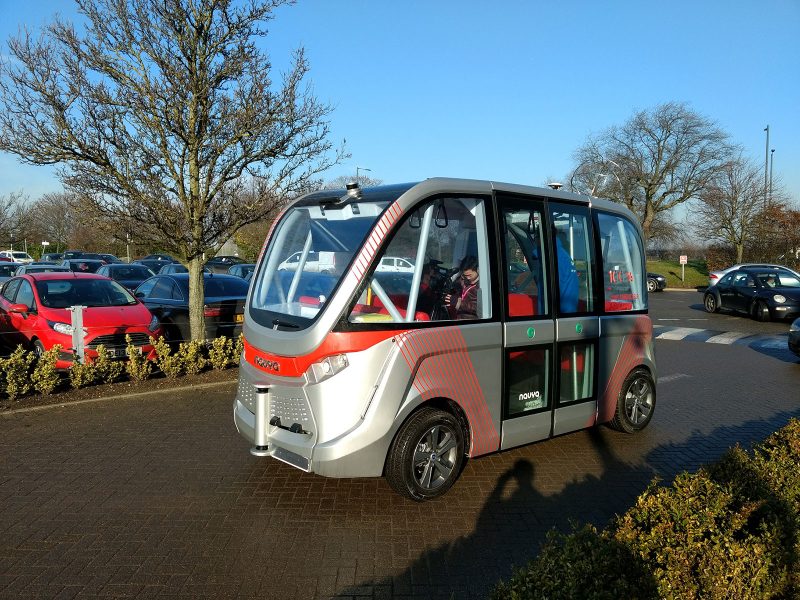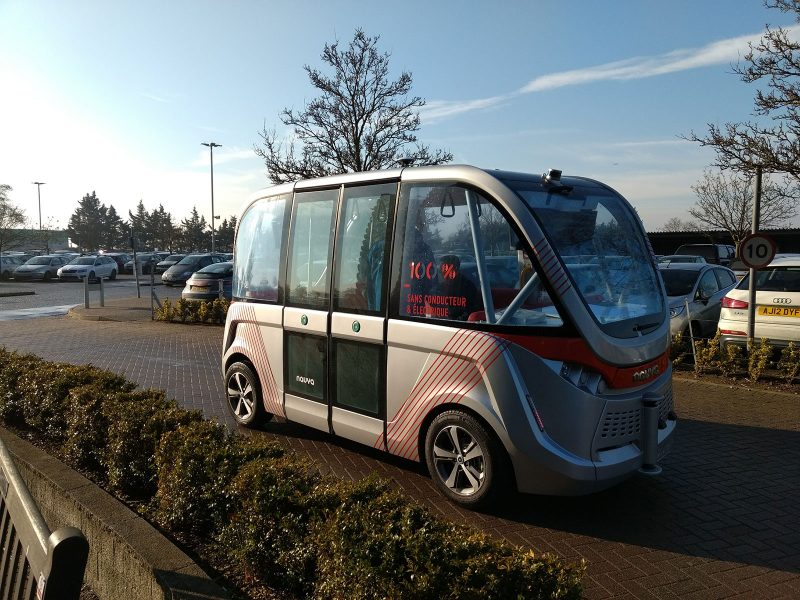The French firm NAVYA has for the first time demonstrated their fully autonomous shuttle bus, named ARMA, in the UK, at Heathrow airport. The shuttle bus is capable of transporting 15 passengers and is fully automated, with no steering wheel, no driving seat and of course, no driver.
The shuttle bus is NAVYA’s first autonomous vehicle and works using a combination of sensors, cameras and lidar (a type of rader that uses laser light) to navigate its surroundings. To avoid the complication of mapping a route on the fly, the Arma is first taken around its designated course by a trainer who guides it using a joystick. Using this method, the vehicle is able to create an accurate 3D map that’s backed up by pin-point GPS data as well as using its copious array of sensors to detect obstacles, including speed humps and much more. Once mapped, an operator is currently required to be on-board who simply taps a touchscreen to navigate from one bus stop to another along the pre-mapped 3D world.
ARMA is powered by electric motors that provide a smooth and quiet ride on the customised Citroen Picasso chassis that has been adopted for use in their first vehicles. Despite its humble beginnings, the rest of NAVYA is custom-built at a factory unit near Lyon, France.
The ARMA is capable of travelling at speeds up to 25km/h (15 mph) and is charged wirelessly using induction charging. When the battery gets low, the vehicle can guide itself over the charging pad and recharge automatically. Range can vary depending on climate and region where it is located, for example ARMA’s intended for the middle east have been equipped with dual air-conditioning units to counter the heat, as well as additionaly insulation protection underneath to protect the batteries from surface heat. Likewise, ARMA’s intended for Singapore must cope with heavy rain and frequent thunderstomrs, while those in other climates encounter location specific problems too. Nevertheless, ARMA is able to carry out a day’s travel and the company is learning fast.
During last year alone, NAVYA covered 100,000km and are resultantly fast becoming one of the foremost level 5 autonomous vehicle companies around. Other autonomous vehicles, like for example that found in a Tesla Model S Autopilot system is a lower level of autonomy (for the moment). NAVYA expects their kilometres of real-world experience to increase at a rapid rate, providing the company with invaluable data to refine their systems. One customer who’s already begun testing ARMA vehicles at a non-public site anticipates 350,000km to be covered in June of this year alone.
The demonstration at Heathrow was illuminating. There were no special safe-guards in place. The path travelled wasn’t cordoned off and everyone on the site was not told of its presence. Instead, ARMA had to deal with real-world traffic in a car park complete with busy pedestrian crossings, speed humps and cars parked at every angle. There was only one hesitation on our journey, where ARMA had detected a poorly parked vehicle that it approached with caution in case it would move. Besides this minor delay, the ARMA proved itself within moments.
Passengers remarked at how natural it was to experience and that there wasn’t anything to get used to. In many ways, it felt more like a train than a bus because of the lack of interaction with a driver. A question that frequently pops up is whether there will be fewer jobs because of autonomous vehicles and in NAVYA’s case, they say no but that the jobs will transition to something else, for example a conductor as opposed to a driver.
Additionally, NAVYA doesn’t just sell an autonomous bus, hand over the ‘virtual’ keys and leave it at that. Instead, they sell a package, which includes deplyment, support and maintenance for around €10,000/month. For a technology as new as this, that’s an impressively low figure considering it can enable fully autonomous buses on roads today.
NAVYA are looking to expand their portfolio and are working with existing bus manufacturers too. The company does not see itself as a car maker and instead is happy to discuss the technology with anyone interested.


